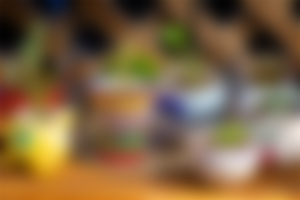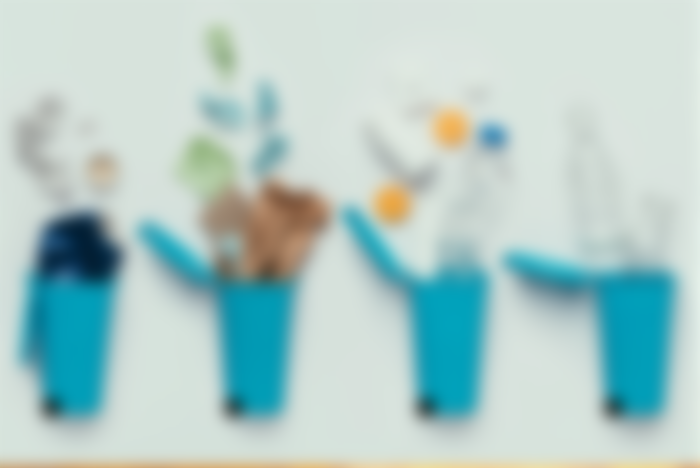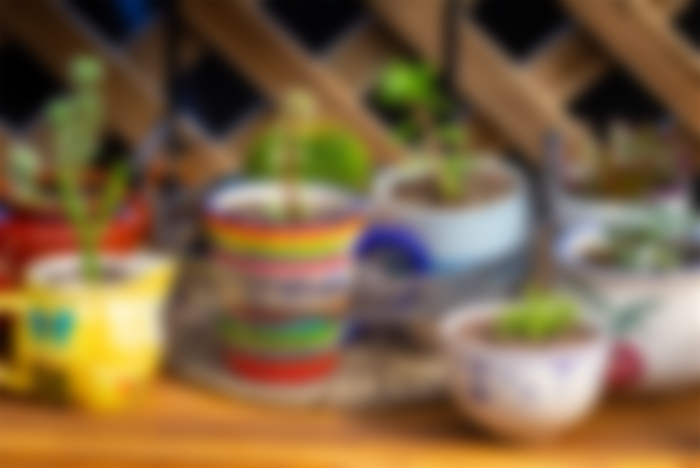Recently, we are trying to live without waste in order to reduce the damage we have done to the environment, and we are trying to significantly reduce our consumption and waste generation. However, as long as we produce and consume, both raw material sustainability will continue to decrease and garbage will remain a part of our lives. Therefore, instead of wasting our energy in order not to create any garbage, it is useful to think about how we can transform the waste that will be created into an environmentally harmless state. Yes, it is easy to reuse food by recycling, but what do we do with items that have completed their useful life and no longer function?

This is where recycling and upcycle come into play.
The concept of recycling is a concept that has been in our lives for many years and that we have now adopted. When it comes to recycling of materials, the first thing that comes to mind for most of us is the upcycling version. So what is this other version in this thread, that is, upcycling?
Let's take a closer look at upcycle.
What is Upcycling?
This new generation recycling is a very useful way of recycling, just like recycling. However, as the name suggests, this transformation is not backwards, but full throttle forward!
This concept was first used by German engineer Reiner Pilz in 1994, and in an interview with Pilz's Salvo magazine, "We must strive to prolong the life of the products we use." spread with his words and started to gain momentum in the 2000s.
Upcycling is a sustainability-related concept that enables the production of new and environmentally friendly products from idle products. We can define it as the process of reusing and reusing the items that have completed their life and can no longer be used for their main purpose, completely different from their original purpose.
Upcycling, which expresses a transformation that carries the existing one further; It can be applied at very different scales, from individual waste to large-scale municipal waste. There is no need for any industrial process, and we can do these works even in our own homes. Items saved from being thrown away can be changed to meet different needs and gain new meanings thanks to upcycling applications. You can also bring back to life every item you do not use, from your broken items to your old clothes, and significantly reduce the damage to nature.
Among the most popular examples of upcycling are applications such as making pots from old tires of cars, turning stained-cornered shirts into doll clothes, and making bookshelves from broken garden stairs. In other words, bottles, wooden materials, cardboard boxes, worn parts of cars, broken furniture and much more can be material for upcycling ideas.
What are the Differences Between Upcycling and Recycling?
So, what are the differences between recycling and upcycling, which we are more familiar with so far?
Recycling, as the name suggests, is the process of converting waste material to its original form.
It involves more of an industrial manufacturing process and refers to the reuse of the raw material used in the production of waste material. In other words, waste materials that are no longer used are separated according to their types in recycling facilities, and then turned back into raw materials by industrial methods. Thus, recycled raw material through various physical and chemical processes can be used in the production of other products.

In recycling, wastes such as metal, glass, plastic and paper are recycled and these materials are reused as raw materials. The aim in recycling is to both reduce costs and protect raw material resources by evaluating wastes and to minimize the damage to the environment as much as possible. For example, products such as toys, cables, carpets and insulation materials are produced from recycled plastic. At the end of the day, these turn into garbage again. Because the quality of the material decreases with each recycling, they cannot be recycled forever and eventually end up in the water and soil as microplastics.
Upcycling, which is a much newer concept than recycling, replaces the production process in recycling with different stages of regulation. The upcycling technique, which aims to contribute to sustainability, which is the most valuable concept of our age, offers the opportunity to use different from its purpose by making an arrangement for the products that you no longer use. This extends the material's life cycle more than recycling does. No physical or chemical pretreatment is required to recycle a waste; What you do with it is entirely up to your dexterity and imagination.
At the same time, the concept of "waste" is eliminated with the forward transformation, which reduces energy consumption to a great extent, and it is ensured that the transition from only consuming people to producing people is achieved. In addition, we give a new value and a new meaning to the thing that has lost its function.
As an example, we can give the understanding of kintsugi in Japanese culture. In this approach, also called Kintsukuroi; broken pottery, dishes or porcelain are combined by using gold or silver powders and made more meaningful and more valuable. This philosophical understanding both respects the history of the object and transforms dysfunctional objects into unique objects.
Making a biodegradable flower pot from waste paper is upcycling, while pulping used paper and producing new paper is recycling.
If it is recycling to melt a broken glass jar and obtain glass raw material, it is upcycling to make a chandelier by gluing broken glass pieces together with a suitable design and painting them.
If turning worn clothes into thread is recycling, then cutting and sewing those clothes and making a cloth bag is upcycling.
If recycling used pet bottles to melt plastic raw materials is recycling, then using those bottles to build a kennel for stray dogs is upcycling.
Second Spring of Waste: Benefits of Upcycling
Upcycling is also an excellent way to give a “second life” to old, worn items. As we look for more and more opportunities to retain products that are valuable to us, by changing the functionality and transforming it into something completely different, we can both prevent the increase in the amount of waste produced and make it possible to preserve their usefulness.

We can list the environmental, economic and personal benefits that upcycling will provide with the re-evaluation process of used raw materials as follows:
Environmental Benefits
Less waste, less damage. These days, many brands and designers are making great collections by transforming old items. Many items that were once treated as waste are being recycled by some creative people. This means less production and less carbon footprint.
Minimum use of natural resources. Recycling existing resources means we don't have to use new raw materials in the production process. Did you know that it takes 2,700 liters of water to produce the cotton needed to make a single T-shirt?
Social and Economic Benefits
Craft development, handicraft. Behind every recycled product lies a handicraft and craftsmanship that we are not used to seeing anymore.
Supporting local and rural industry. Another social and economic benefit of recycling is that it supports small local businesses and rural village industries. Many small manufacturers now sell their handcrafted upcycled products in local markets or online.
Decreased production costs. All products made from recycled and reclaimed materials can also greatly reduce the costs for the designers of the products.
Personal Benefits
Contributing to nature. Nothing beats the warm feeling and well-being that fills you when you do something great for the world and the environment we live in.
Developing skills and creativity. Repairing an item and giving it a new form and life with your own creativity is both a great skill and a great feeling. How much can you brag about yourself!
Owning unique products. Whether you're upcycling something yourself or buying upcycled from designers, it's always nice to know that you have something that is yours and is completely unique.
Upcycling has a few other unique benefits. For example, if you have children, you can use upcycling as a fun way to introduce them to a greener lifestyle. Sorting waste into different recycling bins may not seem fun, but kids can love using their imaginations to come up with ways to reuse household items. Once they become interested in upcycling, it will be easier to involve them in other environmental practices.
Another undeniable personal benefit of upcycling is its positive effects on human psychology. Repairing and renewing old items or transforming them into completely different products and working for this is more enjoyable because it enables a new product to emerge. Spending a little more time with nature or natural products with upcycling studies, which are a practical and effective solution to major problems such as stress and inability to focus, brought about by the feeling of being a part of transformation and renewal. This can be considered as an effective option for stress-free and productive time.



Thanks for this amazing article! Being conscious of what we consume is the first step I guess. I feel bad when I see the amount of waste created by restaurants offering takeaway food during the pandemic. There are other and better options but most people are too lazy to choose them